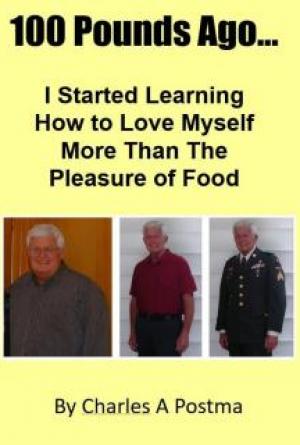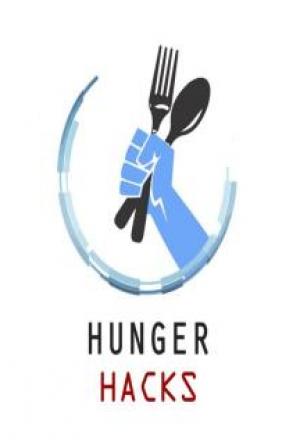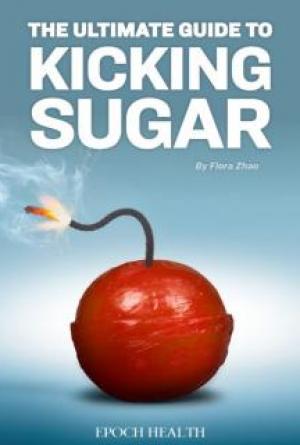BY PETER CONLEY
OUTLINE
My story
The effects of digestion on the body
Macro Nutrients
Foods you should avoid
Narcolepsy friendly diets
Supplements
Meal batching
Ketosis
Intermittent fasting
Conclusion
My Story
Hello fellow sleepy friends.
My name’s Peter and I have Narcolepsy. I write at www.narcolepsycoach.com. I built that website in order to inspire other PWN to live a more fulfilling life with this disease. In addition to that I hope to provide others the best online resources on how to live with Narcolepsy.
To give you some background on me: I was diagnosed with Narcolepsy (no cataplexy) in June 2012.
You can read my story here: narcolepsycoach.com/my-story

Since then I’ve scoured the internet, spoken to countless sleep specialists, and done some self-experimentation in hopes to better manage my narcolepsy.
I can honestly say that changing my diet has been HANDS DOWN the biggest factor in diminishing the effects of my narcolepsy. I wrote this book to provide other PWN tips on diet, eating habits, and to show others what I personally eat.
The second biggest change happened to be my mindset, more specifically feeling like I’m not alone with this disease. That shift happened because of one book:
Wide Awake and Dreaming
It’s written by Julie Flygare. She deserves a round of applause. You can check out the book via the link above.

Back on to diet;
What I have wrote below has massively lessened my EDS symptoms and has improved my sleeping at night.
**If I could stress one thing it would be this: Make sure that you actually act on the information given here. Consuming information is great, but it’s the action and implementation of this diet that will actually change your symptoms. So please, pretty please, do all you can to change your eating habits to better your life. It’s helped me more than I can ever convey through words.** So without further adieu lets get into the book!
The effect of digestion on the body
Believe it or not digesting food is one of the most energy demanding tasks our bodies go through. The more processed the food the harder it is for our digestion systems make it to break it down.
I have found that the closer I keep to a whole foods diet, or foods that are low glycemic, the less my narcolepsy bothers me. I’ve noticed that the more energy it takes for food to be digested, the less my body focuses on keeping me awake. Changing my diet has been the most impactful improvements when it comes to managing my narcolepsy.
If you still are eating a diet full of complex carbs, sugars, and caffeine I strongly urge you to change what you eat.
Here’s an article that will further breakdown the science of digestion:
http://www.livestrong.com/article/320370-how-many-calories-does-digestionuse-up/

"The calories you burn simply digesting food account for 5 to 15 percent of your energy expenditure”
-http://discovermagazine.com/
The difference of low glycemic index food vs. high glycemic index food.
First off, What is the glycemic index?
Google will tell you that...
Low glycemic index food can be defined as:
Foods that are digested slowly leaving you feeling full for longer and allowing you to eat less calories without feeling hungry. Foods that are 55 or lower on the index are considered to be low glycemic.
Some examples of LGI Foods:
100% stone-ground whole wheat or pumpernickel bread
oatmeal (rolled or steel-cut) oat bran muesli Pasta converted rice barley Sweet potato corn
High glycemic index foods can be defined as:
Foods that are digested quickly. Foods that are 70 or higher on the index are considered to be high glycemic.
Some examples of HGI foods:
Sugar
Rice
White potatoes
Cereal Flour
Source:
http://www.diabetes.org/food-and-fitness/food/what-can-i-eat/understandingcarbohydrates/glycemic-index-and-diabetes.html?referrer=https:// www.google.com/
The higher glycemic index a food is the more likely it is to effect your narcolepsy. The more processed a food is, that typically correlates with a high sugar level. Which will adversely effect your EDS. A high spike in glucose levels in the blood will result in PWN correcting by causing you to be drowsy.
Lesson learned Don’t eat this:

Eat this:

One more time.
This:

= good This:

= bad for your narcolepsy.
My opinion
In my opinion digestion effects narcolepsy in the following way; When ever you eat something that takes a lot of energy to be digested, blood rushes to the stomach and focuses less on the brain. By having less resources to keep our “broken brains” alert this can trigger EDS.
I have found the best strategy to be sticking to one of the diets mentioned below.
What are those kinds of foods you ask? And how much of each should I eat?
Don’t worry! I got you!
Let’s move onto Macro nutrients…..
Macro nutrients

All food can be broken down into three Macronutrients:
- -Carbs
- -Fat
- -Protein
You may think you know how to fit foods into these three buckets but you may be surprised to find out what foods are what. For example, did you know that broccoli, peppers, and potatoes would all be classified as Carbs? Did you know that fish is both a fat and a protein? We’ve been programmed to believe that all fat is bad..which just isn’t true.
Let’s start with Fat.
Let me be clear real quick. When I day “fat” I mean dietary fat. Not body fat. Fats are found in all kinds of foods and are in multiple forms; unsaturated and saturated. Fat can be found on the back of a food package on the nutrition label. It’s broken down into these categories:
unsaturated saturated trans fat
Here are some examples of foods that are classified as fats:
Avocados
Olive Olive
Nut Butters
Fish
For a more in-depth article on fat try reading: https://www.verywell.com/what-isdietary-fat-3496105
Also be sure to check out: https://www.verywell.com/why-eating-fat-keeps-youhealthy-3121407
On to Protein.
Most people are aware that this macro nutrient is contained in meat.
Protein also exists in bread, cheese, and other kinds of foods.
Here are some common foods that contain high amounts of the macro nutrient protein:
Poultry
Almonds
Steak
Eggs
Protein is the macro nutrient that the public is most familiar with. When speaking to people about protein everyone generally understands what kinds of food has protein and what foods don’t contain it.
If you care to learn more about protein feel free to dive into these articles:
http://discovergoodnutrition.com/2014/10/what-is-protein/
Last but not least; Carbs!

You may be slightly surprised as to what foods fall under this massive umbrella of “carbs”. I’m referring to the classification of carbs in the macro nutrient sense. Not just the breads and pastas we label as carbs.
Carbs can also be:
Broccoli
Spinach
Sweet Potatoes
Candy
Bread
Peppers
If you’re unsure about which category a food falls under it’s most likely carbs. The standard American diet is incredibly carb heavy. The sugar heavy kinds especially. Even if you’re eating straight vegetables a balanced diet still could use proteins and healthy fats. It’s best to moderate your carb intake.
Foods you should avoid
Sugar
 Sugar should be consumed in moderation by all accounts. Especially by PWN. Excess sugar consumption can lead to excess body fat, mood swings, unstable blood sugar, and a whole array of diseases. I found that moderating my sugar intake to less than 36 grams per day has had a MASSIVE effect on my alertness. I can honestly say it’s been one of the biggest factors of relief on my EDS. I highly suggest you do an audit of your own diet and decide TODAY to reduce your sugar intake.
Sugar should be consumed in moderation by all accounts. Especially by PWN. Excess sugar consumption can lead to excess body fat, mood swings, unstable blood sugar, and a whole array of diseases. I found that moderating my sugar intake to less than 36 grams per day has had a MASSIVE effect on my alertness. I can honestly say it’s been one of the biggest factors of relief on my EDS. I highly suggest you do an audit of your own diet and decide TODAY to reduce your sugar intake.
Where is da sugar?
Sugar not only is found in candy but also in breads, starches, and other processed foods. You can identify sugar by looking on the back of most packing on the nutritional label. Sugar is measured in grams.
Gram daily limit
My naturopathic doctor suggested to use these guidelines for your daily sugar intake:
24 grams per day for females. 36 grams per day for males.
Obviously there is a range based on BMI and genetics but if you’re unfamiliar with how sugar effects you I would stick to these general guide lines. Caffeine
 For people with Narcolepsy we’ve all surely heard this before. But just to reiterate, you should absolutely moderate your caffeine intake. For most PWN, myself included, caffeine is a quick pick-me-up that is shortly followed by a crash. I will however use a pre-work out supplement that has a modest amount of caffeine in the mornings. I personally aim to keep my daily caffeine consumption below 50 mg a day.
For people with Narcolepsy we’ve all surely heard this before. But just to reiterate, you should absolutely moderate your caffeine intake. For most PWN, myself included, caffeine is a quick pick-me-up that is shortly followed by a crash. I will however use a pre-work out supplement that has a modest amount of caffeine in the mornings. I personally aim to keep my daily caffeine consumption below 50 mg a day.
Alcohol
 I have cut down my personal consumption to about 1-3 drinks a week. Firstly, alcohol has a ton of sugar. So just by aiming to keep my sugar intake below 36 grams daily is a hard target to hit with alcohol in the mix. Secondly, drinking alcohol on regular basis makes it harder for me adhere to my other healthy habits. I find myself much more inclined to eat worse or not stick to my sleep schedule when I’m drinking. Thirdly, alcohol fragments your sleep. For people that already have problems with consistent sleep at night this certainly doesn’t help.
I have cut down my personal consumption to about 1-3 drinks a week. Firstly, alcohol has a ton of sugar. So just by aiming to keep my sugar intake below 36 grams daily is a hard target to hit with alcohol in the mix. Secondly, drinking alcohol on regular basis makes it harder for me adhere to my other healthy habits. I find myself much more inclined to eat worse or not stick to my sleep schedule when I’m drinking. Thirdly, alcohol fragments your sleep. For people that already have problems with consistent sleep at night this certainly doesn’t help.
Study on alcohol and sleep: https://pubs.niaaa.nih.gov/publications/aa41.htm
Caffeine and sleep: http://www.aasmnet.org/jcsm/ViewAbstract.aspx?pid=29198
Narcolepsy Friendly Diets
What you should eat
I use the word should very loosely. Everyone has their own personal dietary needs, food allergies, and caloric necessities. BUT there are universal principals you can abide by in order to produce more energy. Such as limiting high glycemic foods, drastically reducing sugar, and limiting your alcohol intake. In this section of the book I’m going to go through what has personally helped me. I have experimented with all sorts of diets but I found 3 specific ones to work best with my narcolepsy.
They are:
1. Whole Foods Diet

A whole food diet consists of optimizing your nutrient consumption from natural sources and avoiding nutrient-poor processed foods. Whole foods mainly include plant-based foods such as vegetables, fruits and nuts, and animal foods such as eggs, meat, fish and poultry.
Examples of meals with the Whole Foods Diet:
Breakfast
• Eggs
• Avocados
• Cottage cheese and fruit
• Yogurt with granola
Lunch
• Salad with organic chicken and veggies
• Burrito bowl with avocado
• Curry or stir-fried entree with whole grain brown rice
Dinner
• A piece of meat or fish with roasted veggies
• Whole grain pasta with fresh tomato sauce and vegetables
• Roasted squash, eggplant or Portabello mushroom over salad • Homemade chili
https://medium.com/@erinfrey/everything-you-need-to-know-about-the-wholefoods-diet-e4025c3d116c
Recommended Whole Foods Cook Books:
Whole Food Diet: The 4 weeks challenge cookbook meal plan to weight loss.
The Whole LIfe Nutrition Cookbook: Over 300 Delicious Whole Foods Recipes
2. Ketogenic Diet

A ketogenic diet is centered around optimizing the amount of healthy fats you eat in proportion to the other macro nutrients; protein & carbs. The typical macronutrient ratio of a Ketogenic diet is:
60-75% from dietary fat
15-30% from protein 5-10% from carbohydrates Mr. Google says:
*At first you may worry about the cravings you get with a ketogenic diet. They will subside. Some very interesting things happen once you switch over to healthy fats as an internal fuel source instead of sugars. This may be one of the harder diets to transition to but it’s had an amazing effect on my energy levels ever since using it.
Foods that are





















